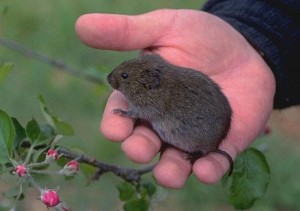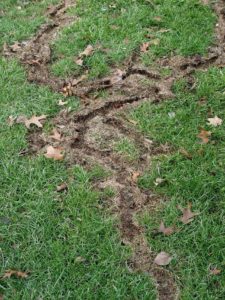 WHAT ARE VOLES?
WHAT ARE VOLES?
Cute and fluffy and basically a field mouse that feeds on plants and seeds in the lawn. Winter tunneling is used to hide from predators under the snow. A neighborhood mousing cat is the single best defense.
WHAT SHOULD WE DO?
DON’T RAKE THE GRASS…YET
Wait until the lawn has been mowed a few times or you may only do more damage to the lawn during dormancy.
DISRUPT THEIR PATHS
Disrupt or destroy the trails and nests and they will likely move on. Unless the lawn is severely damaged, it will likely self-heal.

DON’T REFILL THE BUFFETT
Allow the voles to move on into higher grasses this summer and wait for seeding until the fall. If you must repair the area with seed this spring, use a quick germinating perennial rye seed and make sure it is worked down into the soil well for protection. Lawn Doctor’s Power Seeding machine does this with ease but remember that spring seeding can be difficult when using a pre-emergent to prevent crabgrass.
EXTENSIVE DAMAGE
If the damaged area is larger than 20×20 feet, you’ve got more than a couple of voles. Traps are available at hardware stores. Peanut butter and oatmeal is a good bait or there are commercial baits and repellants sold at the local hardware store. Use caution around pets and children with these.
PROTECT YOUR TREES & SHRUBS
Voles also eat the bark & vascular tissue on trees & shrubs, “girdling” the trunk of the plants. If you see any damage to trees and shrubs, you can place some wire mesh around the base of the tree or shrub, digging it into the ground 3-4 inches.
 WHAT ARE VOLES?
WHAT ARE VOLES?
